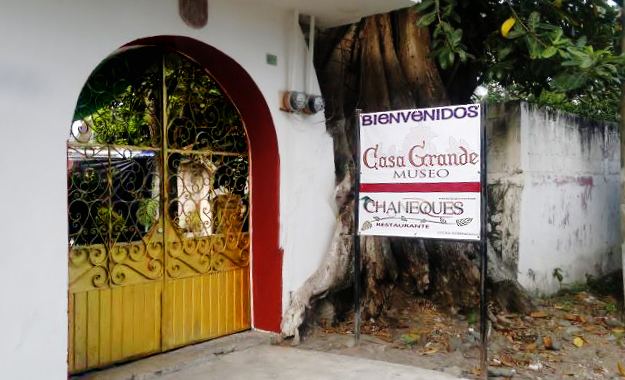 | ||
Casa Grande (literally "Big House") is located in Cempoala, Veracruz, México. Begun build about 1877 to 1880, being the owners Mr. Fermin Zarate and Mrs. Tomasa Licona de Zarate, parents of the world famous dwarf Manuel and Lucia Zarate (35 cm. In height according Ripley's in one of his famous cartoons "Although you not believe it ").
For the construction of the house was necessary to hire a Japanese company to talara trees at that time the buildings were on archaeological woods for them (some now extinct) are used for construction of the estate. Recall that the Zarate family had bought the state government a portion of the estate "of Lencero". This 5.000 acre property was so extensive that Mr. Zarate bragged saying, "I can climb the biggest tree is the tallest pyramid and all I could see and beyond is mine ...".
Zarate's family lived here until 1907, becoming the property of Mr. Crescencio Jacome Arellano and Mrs.Donaciana Dominguez de Jacome. After being closed to the great festivals of the time for 5 years due to the riots pre and post-revolutionary, the house was opened on May 25, 1912 to celebrate a great masked ball. So, the big house was the scene of large and very famous dances organized by the "Club Recreativo Agostaderense" such as were the aforementioned masks, pumpkin (now Halloween) and many more.
Plus, it was the place where he first film roles were the famous cinematographer Jacome family owned also was a meeting of ambassadors and queens of the famous "Club Recreativo Cempoaltecans" from 1945 to 1970. This club was after the "Agostaderense". This house was carved in 1940, the sculpture of Mr. St. Joseph, patron of the parish of this place and the bust of Mrs. Donaciana Dominguez Casas.
Currently in September 2011 the estate known as "Casa Grande" has been open to the public as a historical museum..
